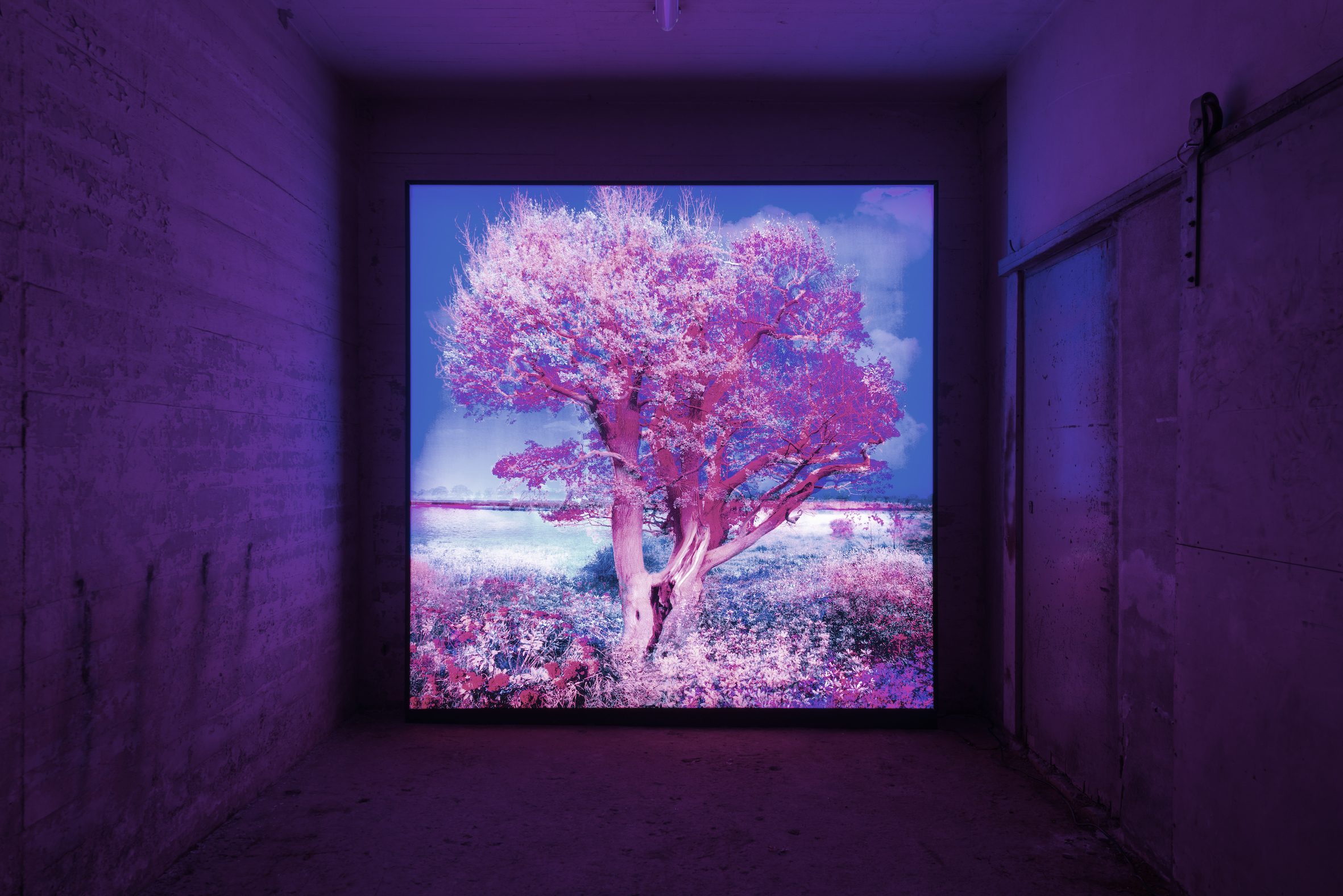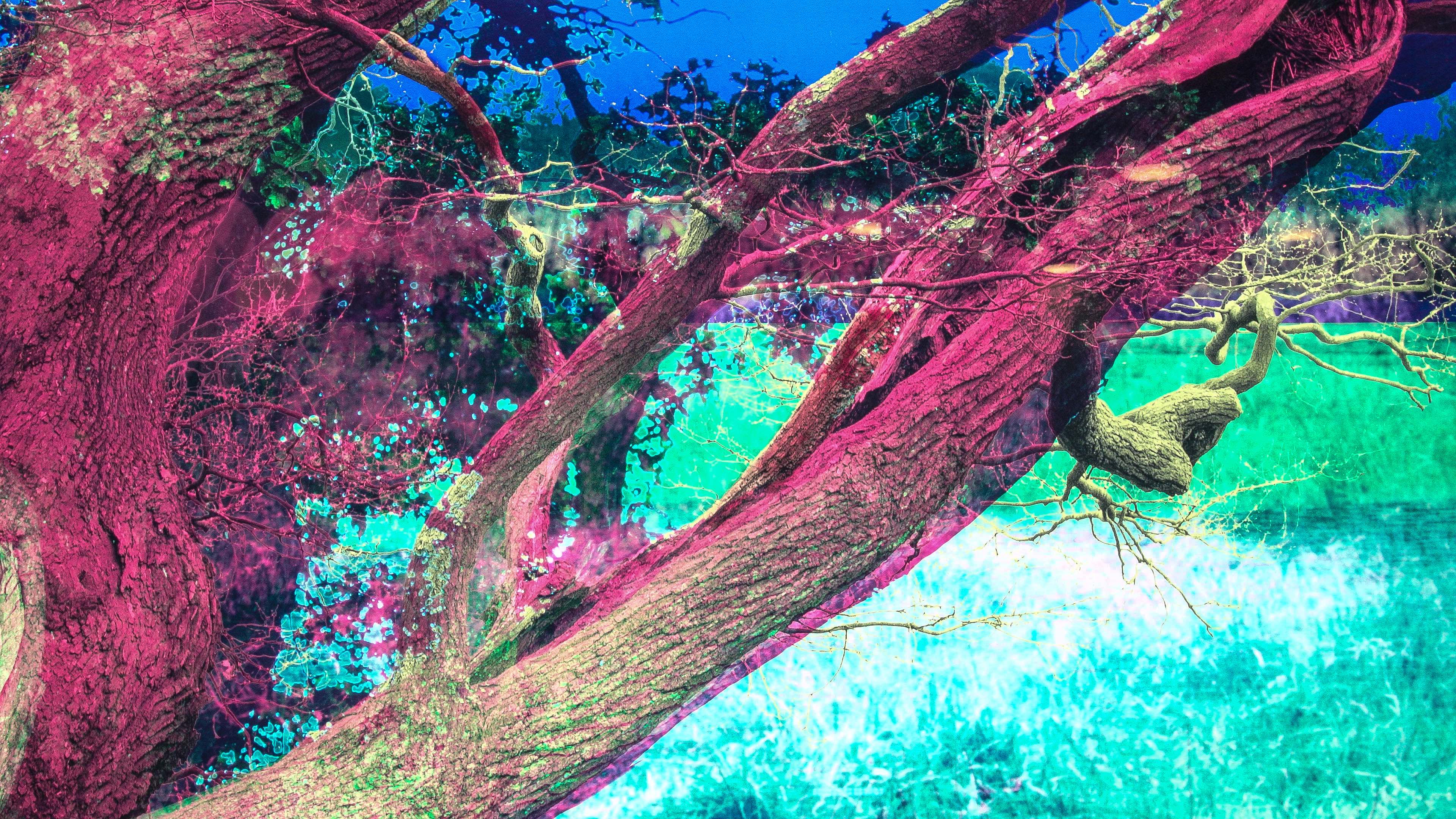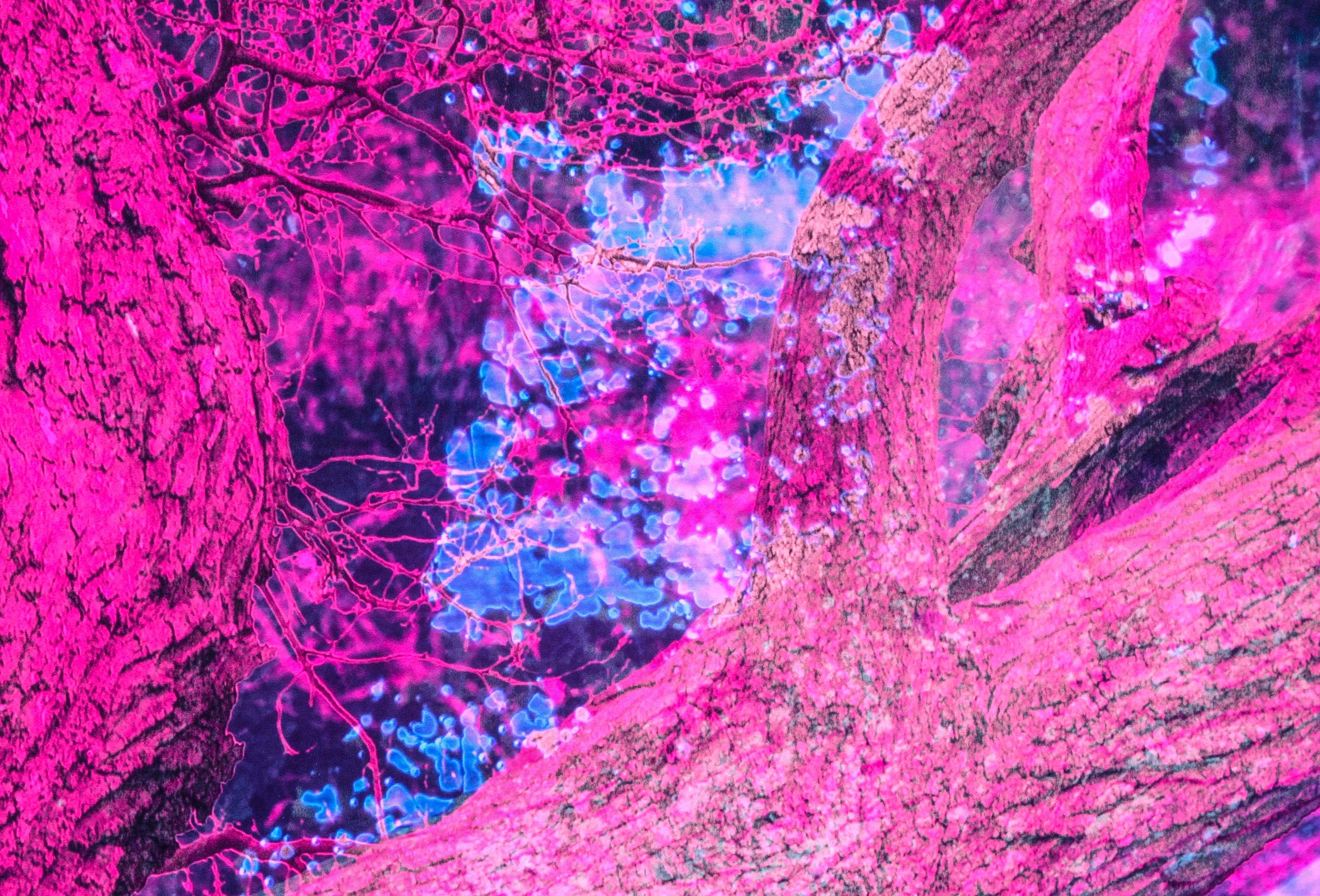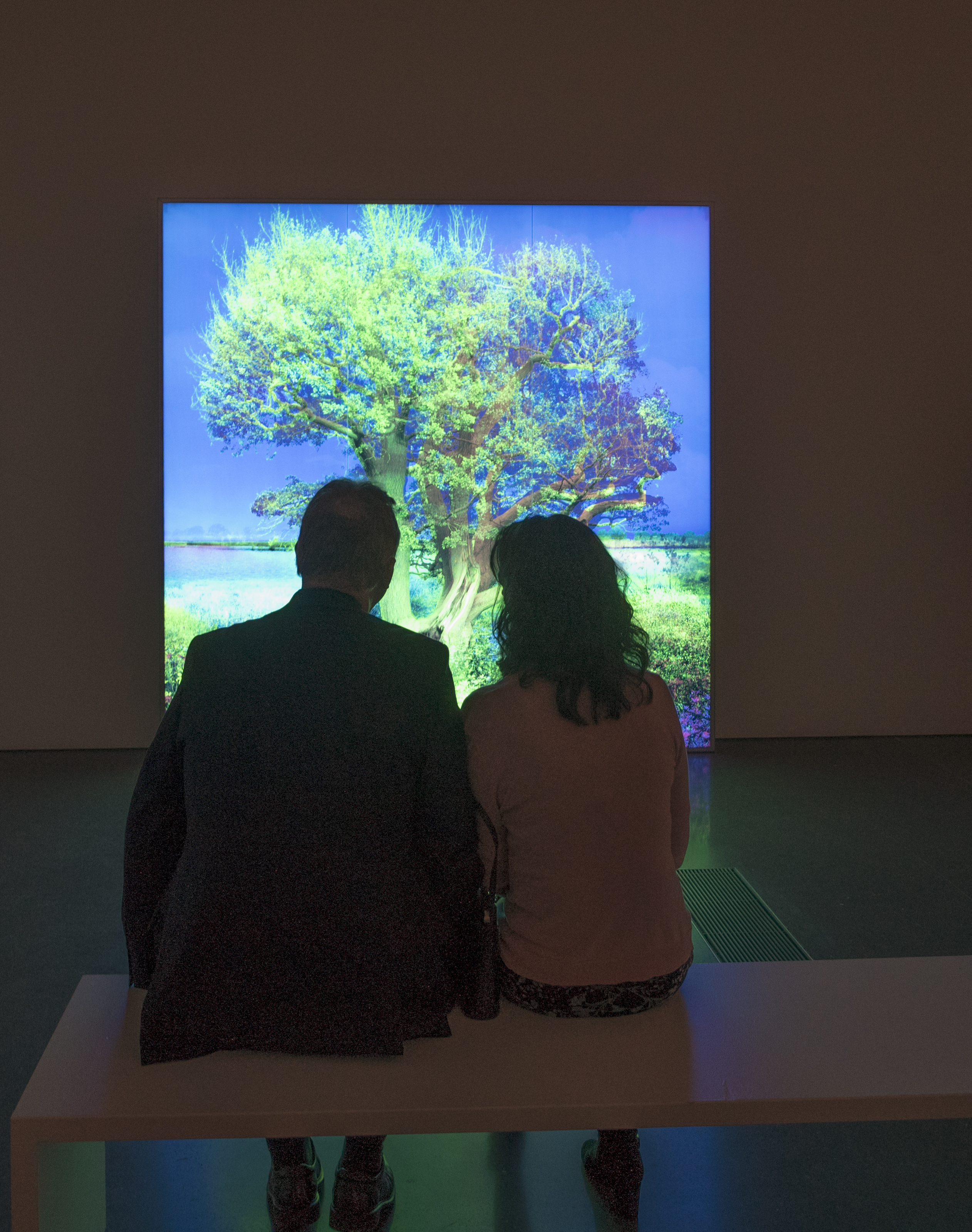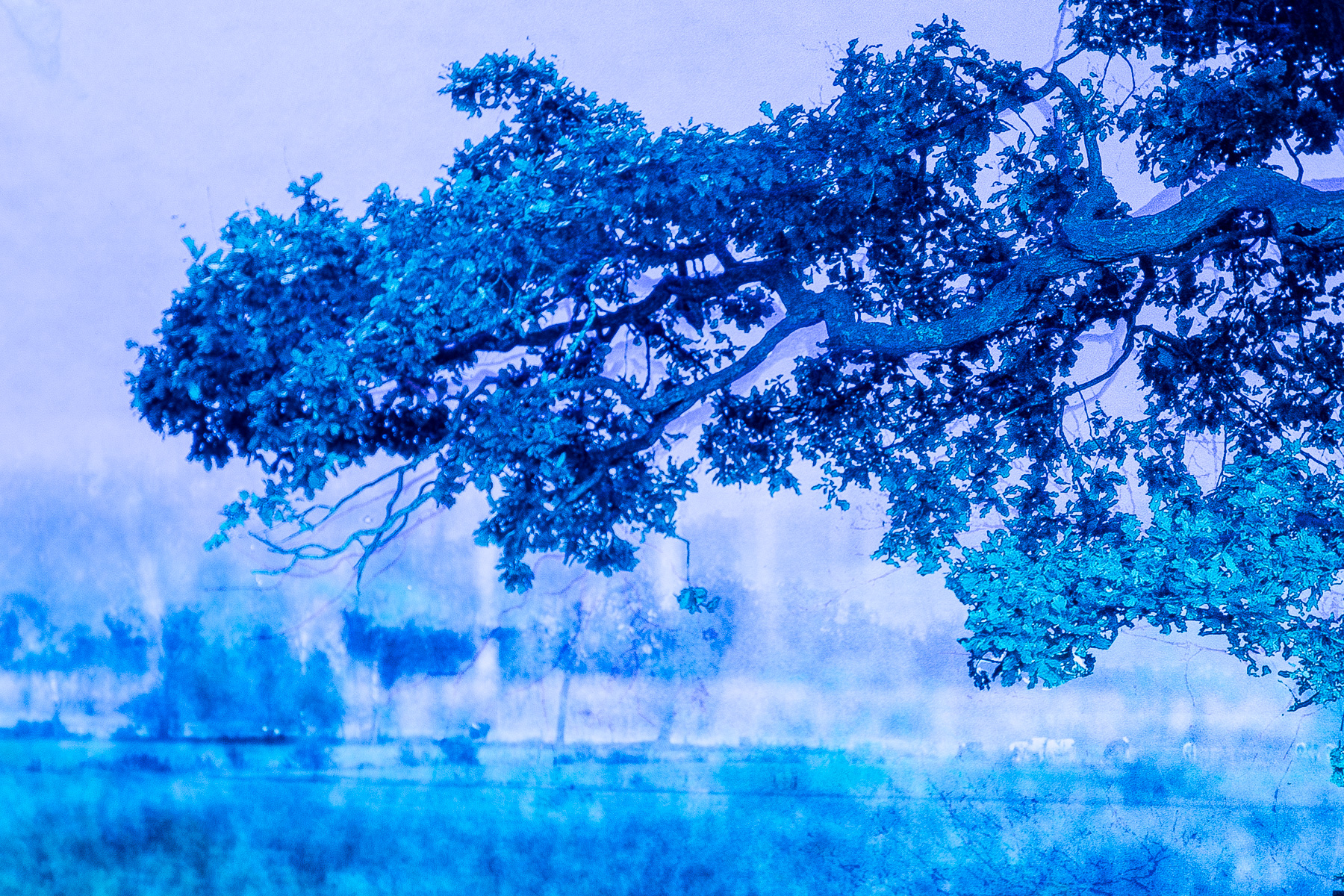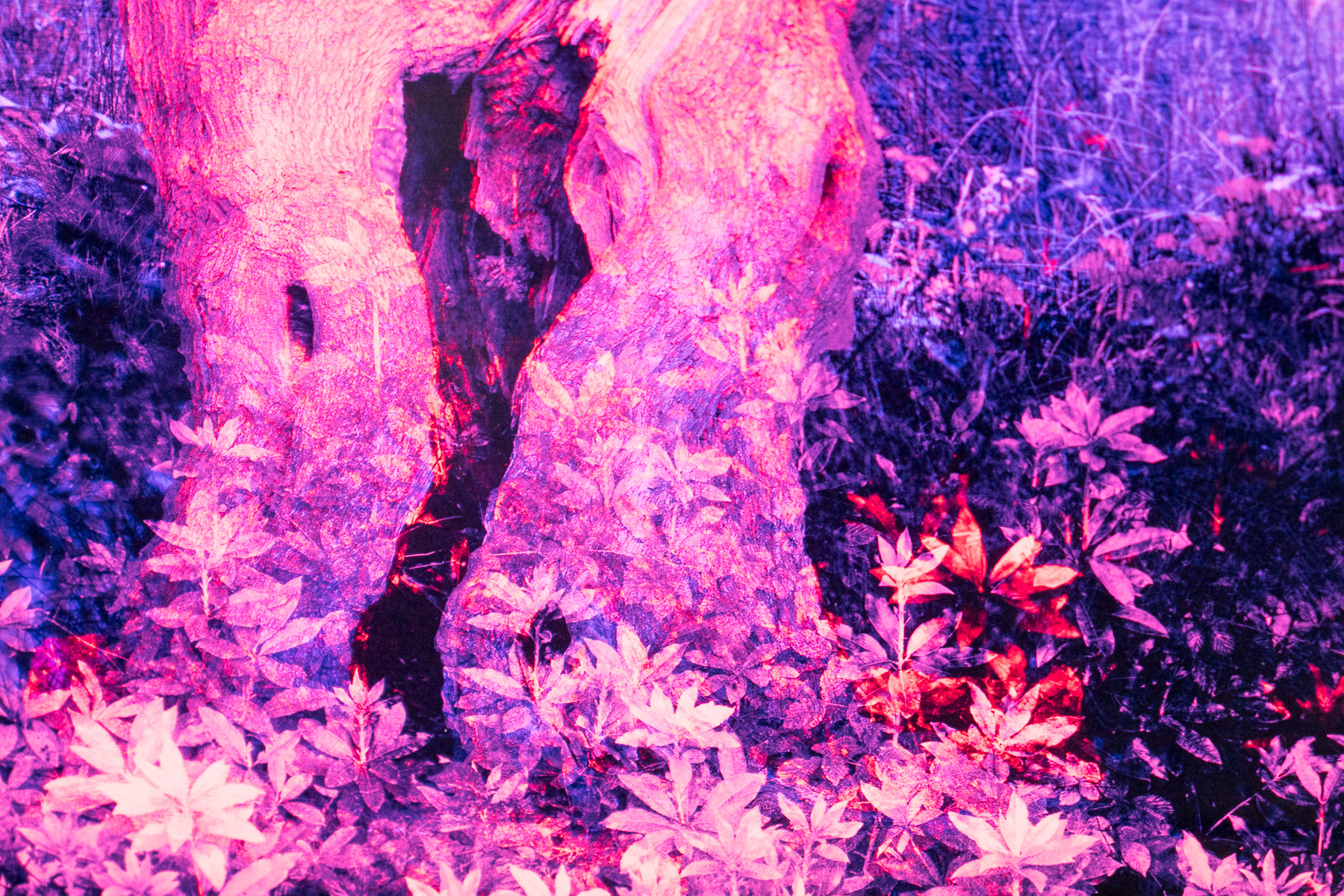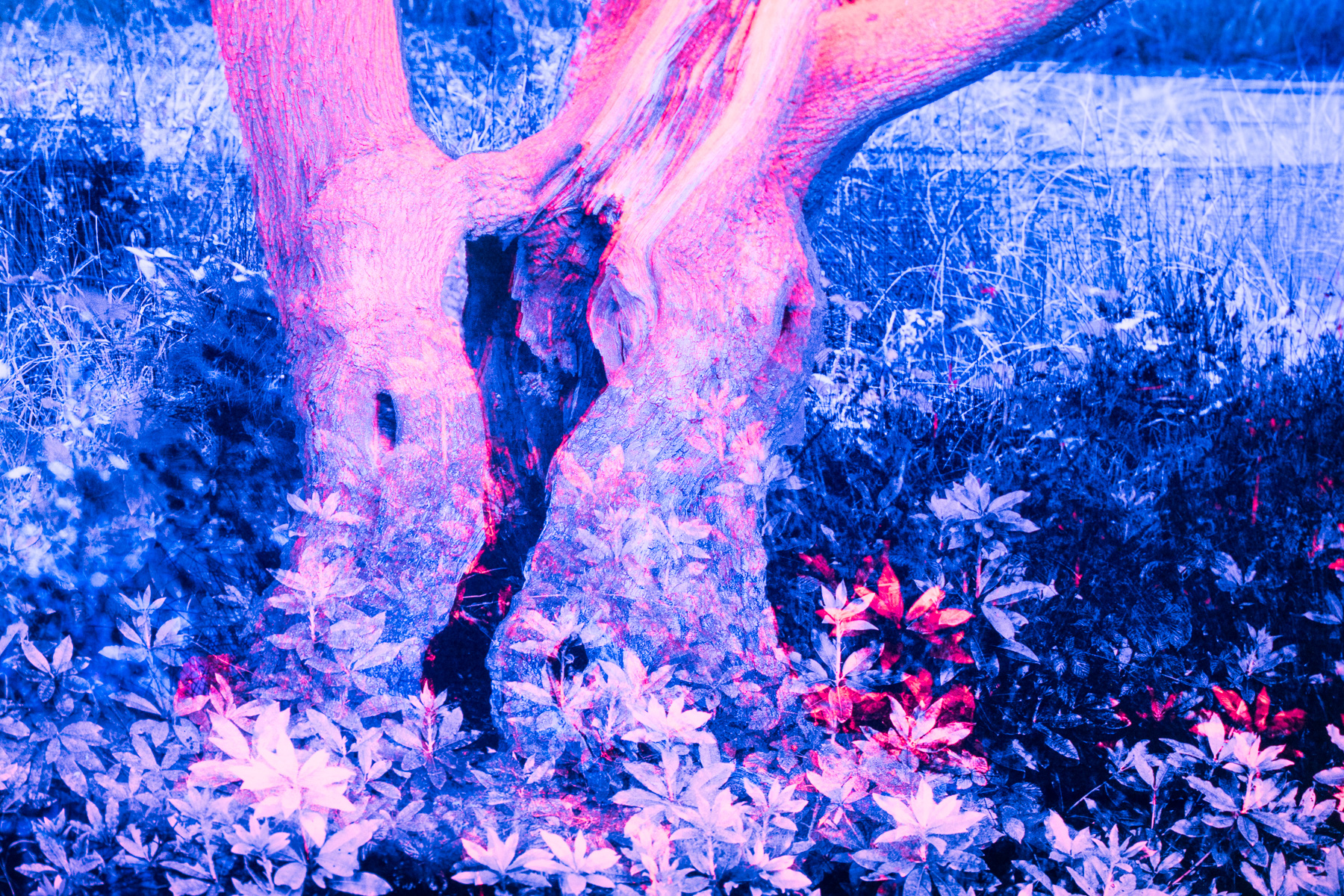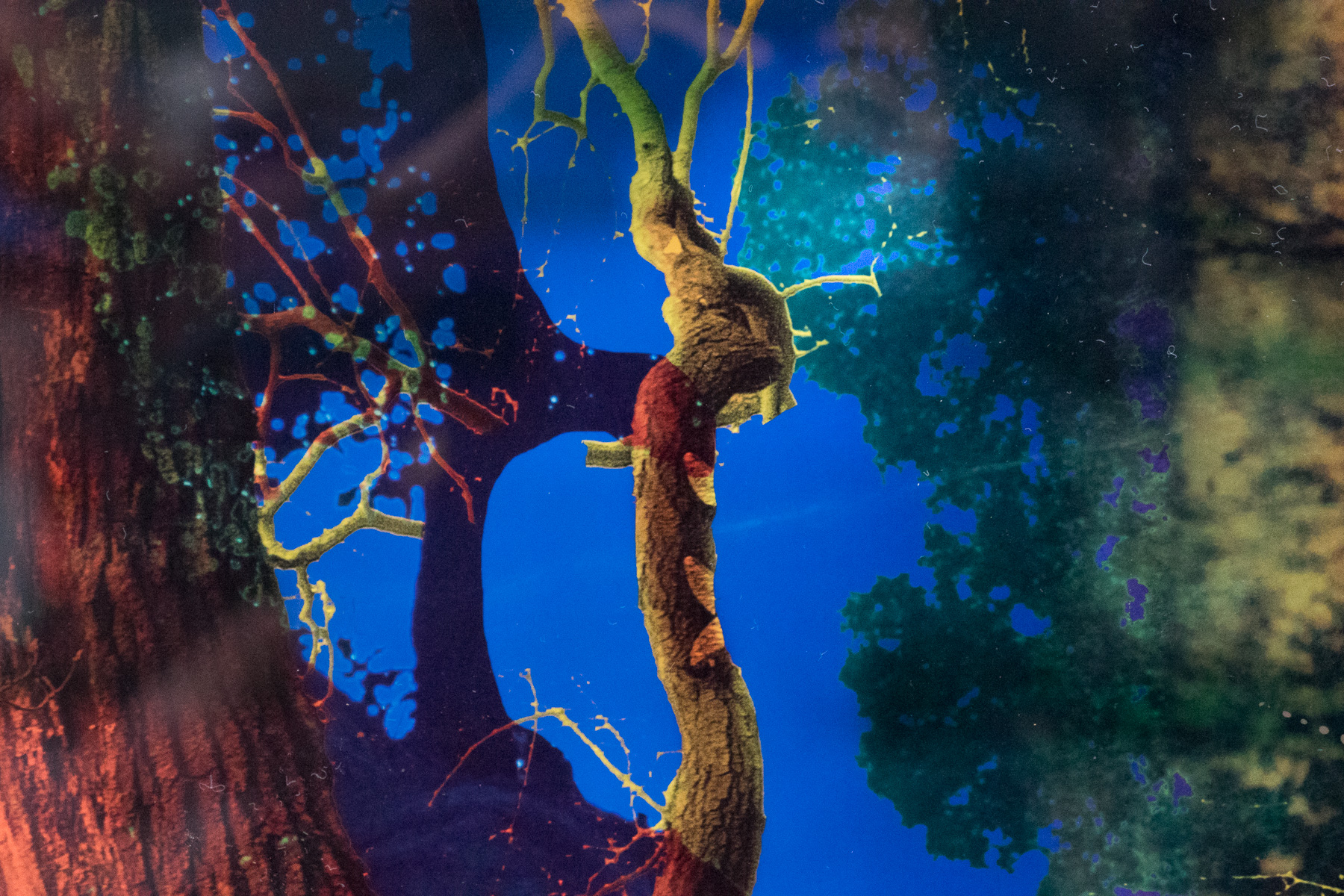NATUREALLY 250cm x 250cm x18cm.
Transparent sublimation-print, laminated glass.
Led-backlight changing colours in a 90-minute sequence.
Courtesy Gallery Ron Mandos Amsterdam.
(Dutch text below)
NATUREALLY.
In contrast to everyday language, poetry is a form of language in which no illusions are created. Everyday language creates illusions by making the language disappear behind the statement. But the poetic form creates, by the grace of the transparency of the means with which it creates: language. The poetic form teaches us that reality is a construction, but anything but an illusion.
The work NATUREALLY resonates with two concepts at the same time: that of Nature and of Technology. The work consists of a monumental image in transition, of a monumental tree, in transition. The image is two-dimensional, the colors vary from plausibly realistic to bright red, purple and poisonous green. The tree, meanwhile, is changing slowly, coming into leaf and losing leaves. We are not looking at a video, but at a photo, which changes color and shape.
A photo of a tree, the LED lighting, the lightbox, the work as a construction, it all belongs to the domain of technology, not of ‘nature’. Yet the construction is hybrid. Time, for example, in the guise of transitions, takes place in the work, driven by technology and artificially. But in the experience of the spectator, who is watching, that time is ‘real’ and that time really passes, without being able to retrieve it. And although the light arises from the lighting technology in the work, it is really light, with real colors.
The maker hopes the work will facilitate this confusion (in the form of wonder). Art is not about recognition, but rather about re-cognition. Re-cognition = Creation. In this way, NATUREALLY is not an ode to nature, or even to the beautiful 500-year-old oak depicted, but an ode to the arts and poetic form.
With the work Natureally (2017), media artist Geert Mul presents nature and landscape through artificial light in combination with processed images of nature. You see a monumental old oak tree in a life-size and intensely coloured heather landscape. It is a fictional landscape that Geert Mul created from a collage of various landscapes in different seasons. The photo collage is made in an extremely high resolution so that despite its dimensions (4.5 × 8 meters), it is still razor-sharp at close range. You can see the veins of every leaf, the grooves in the trunk become almost tangible, a hyperrealism, as in Japanese traditional painted landscapes in which literally every leaf of a tree or bush is depicted.
Through the slowly transforming light, your senses register movement in the photographic image so subtly that it is not visible but can be felt; it feels like an alive place. Various parts are slowly exposed, as if the clouds are sliding in front of the sun. This colour change of light creates the illusion of time in the work, shifting from photography to cinematography. During the one and a half-hour script, the different seasons become visible one-by-one.
While collecting nature images, Mul came across a 500-year-old oak tree called the Kroezeboom. It is one of the oldest oak trees in the Netherlands. In the past centuries, “Kroezebomen” had a particular function as a court place, boundary marker and spiritual position. Mul: “As a phenomenon, I only knew the deeply connected cultural interaction of a local community with trees from Japan. I was amazed that this intense relationship with the life energy of nature (in Japanese “Ki”) also has deep cultural roots in the Netherlands.
Although Natureally’s work consists only physically of technological and artificial parts, it is also part of an ancient tradition in which trees figure as a symbol of reflection and mental development. In NATUREALLY, ‘nature’ and ’technology’ are not opposed.
Dutch:
NATUREALLY.
In tegenstelling tot dagelijks taalgebruik, is poëzie een taalvorm waarin géén illusies worden gewekt. Dagelijkse taal creëert illusies door de taal te laten verdwijnen achter de bewering. Maar de poëtische vorm creëert, bij de gratie van de transparantie van de middelen waarmee het creëert: taal. De poëtische vorm leert ons dat realiteit een constructie is, maar allesbehalve een illusie.
Het werk NATUREALLY resoneert twee concepten tegelijkertijd: dat van Natuur en van Technologie. Het bestaat uit een monumentale afbeelding in transitie, van een monumentale boom, in transitie. De afbeelding is tweedimensionaal, de kleuren variëren tussen aannemelijk realistisch tot helrood, paars en gifgroen. De boom intussen, veranderd traag, komt in blad en verliest blad. We kijken niet naar een video, maar naar een foto, die van kleur en gedaante veranderd.
Een foto van een boom, de ledverlichting, de lightbox, het werk als constructie, het behoord allemaal tot het domein van techno-logie, niet van ‘natuur. Maar toch is de constructie hybride. Tijd, bijvoorbeeld, in de gedaante van transities, speelt zich af in het werk, gedreven door techniek en artificieel. Maar in de beleving van de toeschouwer, die staat te kijken, is die tijd toch ‘echt’ en gaat die tijd echt voorbij, zonder dat die terug te halen is. En hoewel het licht voortkomt uit de lichttechniek in het werk, is het écht licht. Met echte kleuren.
De maker hoopt dat het werk in deze verwarring (in de vorm van verwondering) faciliteert. Kunst gaat niet over herkenning, maar eerder over her-kenning. Her-kenning = Creatie. Op deze manier is NATUREALLY geen ode aan de natuur, of zelfs aan de afgebeelde prachtige 500 jaar oude eik, maar een ode aan de kunsten en de poëtische vorm.
Met het werk Natureally (2017) presenteert mediakunstenaar Geert Mul natuur en landschappelijkheid door het gebruik van artificieel licht in combinatie met bewerkte natuurbeelden. Je ziet een monumentale oude eikenboom, in een levensgroot en intens gekleurd heidelandschap. Het is een fictief landschap, dat Geert Mul creëerde uit een collage van diverse landschappen in verschillende seizoenen. De fotocollage is gemaakt in een extreem hoge resolutie, zodat het ondanks de afmetingen (4,5 x 8 meter), van dichtbij nog altijd haarscherp is. Je ziet de nerven van ieder blaadje, de groeven in de stam worden haast tastbaar, een hyper realisme, als in Japanse traditionele geschilderde landschappen waarin letterlijk elk blaadje van een boom of stuik is afgebeeld.
Door het langzaam transformerende licht, registreren je zintuigen registreren beweging in het fotografische beeld, zo subtiel dat het niet echt zichtbaar is, maar wel voelbaar, het voelt als een plek die leeft. Verschillende onderdelen worden langzaam belicht alsof de wolken voor zon schuiven. Deze kleurverandering van licht creëert de illusie van tijd in het werk, een verschuiving van fotografie naar cinematografie. Tijdens een anderhalf uur-durend script worden de verschillende seizoenen een-voor-een zichtbaar.
Tijdens het verzamelen van natuurbeelden kwam Mul een 500 jaar oude eik tegen, genaamd de Kroezeboom. Het is één van de oudste eikenbomen van Nederland. ‘Kroezebomen’ hadden in de afgelopen eeuwen een bijzondere functie als gerechtsplaats, grensmarkering en een spirituele functie. Mul: “De diep verbonden culturele omgang van een lokale gemeenschap met bomen kende ik als fenomeen alleen uit Japan. Ik was verbaasd dat deze intense relatie met de levensenergie van natuur (in het Japans “Ki”) ook in Nederland diepe culturele wortels heeft.
Hoewel het werk Natureally fysiek alleen maar uit technologische en kunstmatige onderdelen bestaat, is het ook onderdeel van een oeroude traditie waarin bomen figureren als symbool van bezinning en mentale ontwikkeling. In NATUREALLY zijn ‘natuur’ en ’technologie’ niet tegengesteld.


